1.Identification
1.1 GHS Product identifier
| Product name | DDE |
|---|
1.2 Other means of identification
| Product number | - |
|---|---|
| Other names | 2,2-Bis(4-chlorophenyl)-1,1-dichloroethylene |
1.3 Recommended use of the chemical and restrictions on use
| Identified uses | For industry use only. DDT was extensively used in the past for the control of malaria, typhus, and other insect-transmitted diseases. It was banned for use in the United States in 1972, except in the case of a public health emergency. DDE is a breakdown product of DDT and has no uses. |
|---|---|
| Uses advised against | no data available |
1.4 Supplier's details
| Company | MOLBASE (Shanghai) Biotechnology Co., Ltd. |
|---|---|
| Address | Floor 4 & 5, Building 12, No. 1001 North Qinzhou Road, Xuhui District, Shanghai, China |
| Telephone | +86(21)64956998 |
| Fax | +86(21)54365166 |
1.5 Emergency phone number
| Emergency phone number | +86-400-6021-666 |
|---|---|
| Service hours | Monday to Friday, 9am-5pm (Standard time zone: UTC/GMT +8 hours). |
2.Hazard identification
2.1 Classification of the substance or mixture
Not classified.
2.2 GHS label elements, including precautionary statements
| Pictogram(s) |   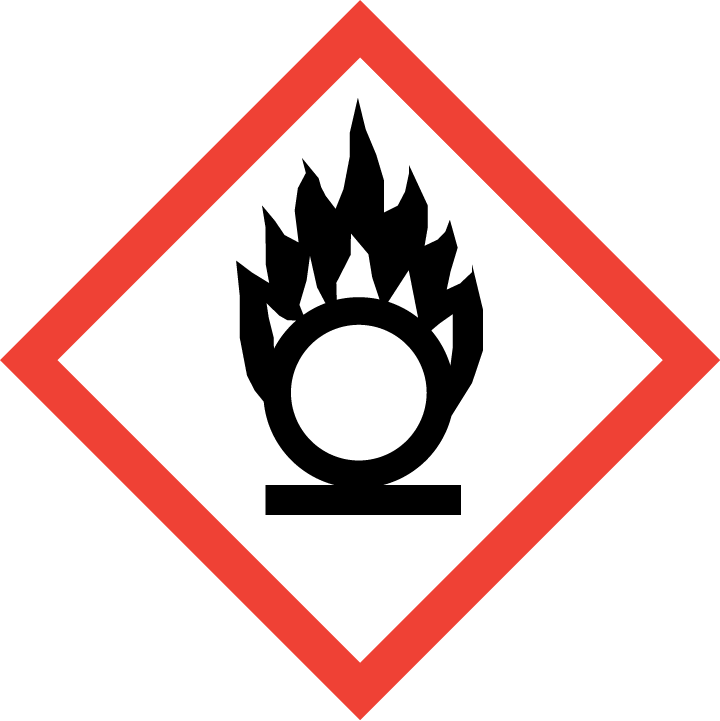   |
|---|---|
| Signal word | Warning |
| Hazard statement(s) | H302 Harmful if swallowed H311 Toxic in contact with skin H315 Causes skin irritation H331 Toxic if inhaled H332 Harmful if inhaled H400 Very toxic to aquatic life |
| Precautionary statement(s) | |
| Prevention | none |
| Response | none |
| Storage | none |
| Disposal | none |
2.3 Other hazards which do not result in classification
none
3.Composition/information on ingredients
3.1 Substances
| Chemical name | Common names and synonyms | CAS number | EC number | Concentration |
|---|---|---|---|---|
| DDE | DDE | 72-55-9 | none | 100% |
4.First-aid measures
4.1 Description of necessary first-aid measures
General advice
Consult a physician. Show this safety data sheet to the doctor in attendance.
If inhaled
If breathed in, move person into fresh air. If not breathing, give artificial respiration. Consult a physician.
In case of skin contact
Wash off with soap and plenty of water. Consult a physician.
In case of eye contact
Rinse thoroughly with plenty of water for at least 15 minutes and consult a physician.
If swallowed
Never give anything by mouth to an unconscious person. Rinse mouth with water. Consult a physician.
4.2 Most important symptoms/effects, acute and delayed
SYMPTOMS: Symptoms of exposure to this compound may include liver and kidney damage. Based on data for a similar compound, symptoms may also include vomiting, headache, fatigue, malaise, numbness and partial paralysis of the extremities, moderate ataxia, exaggeration of part of the reflexes, mild convulsions, loss of porprioception and vibratory sensation of the extremities, hyperactive knee-jerk reflexes, excitement, confusion and increased respiration. It may also cause nausea and diarrhea. Other symptoms may include tremors of the head and neck muscles, cardiac and respiratory failure and even death. It may also cause paresthesias of the tongue, lips and face, irritability and dizziness. It may cause tonic and clonic convulsions. Other symptoms include apprehension and hyperesthesia of the mouth and face. It may also cause "yellow vision". ACUTE/CHRONIC HAZARDS: This compound is harmful if ingested, inhaled or absorbed through the skin. It may cause irritation. There is clear evidence that this compound is an animal carcinogen. When heated to decomposition it emits very toxic fumes of carbon monoxide and carbon dioxide. It may also emit toxic fumes of hydrogen chloride gas.
4.3 Indication of immediate medical attention and special treatment needed, if necessary
Observation. Persons exposed to high levels of organochlorine pesticides by any route should be observed for sensory disturbances, incoordination, speech slurring, mental aberrations, and involuntary motor activity that would warn of imminent convulsions. /Solid organochlorine insecticides/
5.Fire-fighting measures
5.1 Extinguishing media
Suitable extinguishing media
Fires involving this material can be controlled with a dry chemical, carbon dioxide or Halon extinguisher.
5.2 Specific hazards arising from the chemical
Flash point data for this chemical are not available. It is probably combustible.
5.3 Special protective actions for fire-fighters
Wear self-contained breathing apparatus for firefighting if necessary.
6.Accidental release measures
6.1 Personal precautions, protective equipment and emergency procedures
Use personal protective equipment. Avoid dust formation. Avoid breathing vapours, mist or gas. Ensure adequate ventilation. Evacuate personnel to safe areas. Avoid breathing dust. For personal protection see section 8.
6.2 Environmental precautions
Prevent further leakage or spillage if safe to do so. Do not let product enter drains. Discharge into the environment must be avoided.
6.3 Methods and materials for containment and cleaning up
SRP: Wastewater from contaminant suppression, cleaning of protective clothing/equipment, or contaminated sites should be contained and evaluated for subject chemical or decomposition product concentrations. Concentrations shall be lower than applicable environmental discharge or disposal criteria. Alternatively, pretreatment and/or discharge to a POTW is acceptable only after review by the governing authority. Due consideration shall be given to remediation worker exposure (inhalation, dermal and ingestion) as well as fate during treatment, transfer and disposal. If it is not practicable to manage the chemical in this fashion, it must meet Hazardous Material Criteria for disposal.
7.Handling and storage
7.1 Precautions for safe handling
Avoid contact with skin and eyes. Avoid formation of dust and aerosols. Avoid exposure - obtain special instructions before use.Provide appropriate exhaust ventilation at places where dust is formed. For precautions see section 2.2.
7.2 Conditions for safe storage, including any incompatibilities
PRECAUTIONS FOR "CARCINOGENS": Storage site should be as close as practicable to lab in which carcinogens are to be used, so that only small quantities required for ... expt need to be carried. Carcinogens should be kept in only one section of cupboard, an explosion-proof refrigerator or freezer (depending on chemicophysical properties ...) that bears appropriate label. An inventory ... should be kept, showing quantity of carcinogen & date it was acquired ... Facilities for dispensing ... should be contiguous to storage area. /Chemical Carcinogens/
8.Exposure controls/personal protection
8.1 Control parameters
Occupational Exposure limit values
no data available
Biological limit values
no data available
8.2 Appropriate engineering controls
Handle in accordance with good industrial hygiene and safety practice. Wash hands before breaks and at the end of workday.
8.3 Individual protection measures, such as personal protective equipment (PPE)
Eye/face protection
Safety glasses with side-shields conforming to EN166. Use equipment for eye protection tested and approved under appropriate government standards such as NIOSH (US) or EN 166(EU).
Skin protection
Wear impervious clothing. The type of protective equipment must be selected according to the concentration and amount of the dangerous substance at the specific workplace. Handle with gloves. Gloves must be inspected prior to use. Use proper glove removal technique(without touching glove's outer surface) to avoid skin contact with this product. Dispose of contaminated gloves after use in accordance with applicable laws and good laboratory practices. Wash and dry hands. The selected protective gloves have to satisfy the specifications of EU Directive 89/686/EEC and the standard EN 374 derived from it.
Respiratory protection
Wear dust mask when handling large quantities.
Thermal hazards
no data available
9.Physical and chemical properties
| Physical state | white crystalline powder |
|---|---|
| Colour | White, crystalline solid |
| Odour | no data available |
| Melting point/ freezing point | 4°C(lit.) |
| Boiling point or initial boiling point and boiling range | 124°C/16mmHg(lit.) |
| Flammability | no data available |
| Lower and upper explosion limit / flammability limit | no data available |
| Flash point | 107°C(lit.) |
| Auto-ignition temperature | no data available |
| Decomposition temperature | no data available |
| pH | no data available |
| Kinematic viscosity | no data available |
| Solubility | less than 0.1 mg/mL at 22.22°C |
| Partition coefficient n-octanol/water (log value) | log Kow = 6.51 |
| Vapour pressure | 6.0X10-6 mm Hg at 25°C |
| Density and/or relative density | no data available |
| Relative vapour density | no data available |
| Particle characteristics | no data available |
10.Stability and reactivity
10.1 Reactivity
no data available
10.2 Chemical stability
Stable under recommended storage conditions.
10.3 Possibility of hazardous reactions
P,P'-DDE is sensitive to exposure to light. This compound is incompatible with strong oxidizing agents and strong bases. Oxidation is catalyzed by UV radiation.
10.4 Conditions to avoid
no data available
10.5 Incompatible materials
no data available
10.6 Hazardous decomposition products
When heated to decomposition it emits very toxic fumes of /chlorides/.
11.Toxicological information
Acute toxicity
- Oral: LD50 Rat oral 880 mg/kg
- Inhalation: no data available
- Dermal: no data available
Skin corrosion/irritation
no data available
Serious eye damage/irritation
no data available
Respiratory or skin sensitization
no data available
Germ cell mutagenicity
no data available
Carcinogenicity
Cancer Classification: Group B2 Probable Human Carcinogen
Reproductive toxicity
No information is available on the reproductive or developmental effects of DDT or DDE in humans via inhalation exposure. No studies are available on the developmental effects in humans after oral exposure to DDT or DDE. However, DDT and DDE have been found in human blood, placental tissue, and umbilical cord blood. Epidemiologic studies did not find an association between DDT maternal blood levels and miscarriages or premature rupture of fetal membranes in humans. Oral animal studies have reported reproductive effects, such as reduced fertility, adverse effects on spermatogenesis, and decreased testicular and ovarian weights from DDT exposure. Developmental effects, such as embryotoxicity and fetotoxicity, but not teratogenicity (birth defects) have also been observed in oral animal studies. DDT has been shown to elicit estrogenic activity in rats after oral exposure .
STOT-single exposure
no data available
STOT-repeated exposure
no data available
Aspiration hazard
no data available
12.Ecological information
12.1 Toxicity
- Toxicity to fish: LC50; Species: Oncorhynchus mykiss (Rainbow trout, weight 0.8 g); Conditions: freshwater, static, 12°C, pH 7.1, hardness 44 mg/L CaCO3; Concentration: >87 ug/L for 24 hr /99% purity, technical material
- Toxicity to daphnia and other aquatic invertebrates: no data available
- Toxicity to algae: no data available
- Toxicity to microorganisms: no data available
12.2 Persistence and degradability
AEROBIC: DDE was not degraded in static screening tests using settled domestic wastewater inoculum with yeast extract, with 3 additional subcultures added every 7 days(1). No degradation of DDE exposed to ocean sediments in seawater under aerobic conditions were observed after 12 months(2). No degradation of DDE observed after 8 weeks of exposure of DDE in lab tests to raw water from a stream which received domestic and industrial wastes and farm runoff(3). Half-life of DDE exposed to river sediments was 1,100 days(4). BOD after 30 days of <1.0 ug O2/mL for DDE exposed to soil inoculum indicated only slight biodegradation(5).
12.3 Bioaccumulative potential
BCF values of DDE have been reported in the following aquatic organisms: rainbow trout, 81,000(2); fathead minnow, 51,000(3); fish (no species reported, static microcosm study), 27,500(4); Gambusia affinis, 217 (3 days exposure)(1); trout, 1.8X10+5, bluegill sunfish, 1.1X10+5(6). According to a classification scheme(7), these BCF data suggest bioconcentration in aquatic organisms is very high(SRC). BCF values of 28,600 have been reported in zooplankton(5).
12.4 Mobility in soil
The Koc value of p,p'-DDE in soil from Taichung, Taiwan was measured as 26,300(1) and 75,860(2) in soil column batch experiments. The avg log Koc value of DDE in lake sediment was 4.58(3). According to a classification scheme(4), these Koc values suggest that DDE is expected to be immobile in soil(SRC).
12.5 Other adverse effects
no data available
13.Disposal considerations
13.1 Disposal methods
Product
The material can be disposed of by removal to a licensed chemical destruction plant or by controlled incineration with flue gas scrubbing. Do not contaminate water, foodstuffs, feed or seed by storage or disposal. Do not discharge to sewer systems.
Contaminated packaging
Containers can be triply rinsed (or equivalent) and offered for recycling or reconditioning. Alternatively, the packaging can be punctured to make it unusable for other purposes and then be disposed of in a sanitary landfill. Controlled incineration with flue gas scrubbing is possible for combustible packaging materials.
14.Transport information
14.1 UN Number
| ADR/RID: UN3077 | IMDG: UN3077 | IATA: UN3077 |
14.2 UN Proper Shipping Name
| ADR/RID: ENVIRONMENTALLY HAZARDOUS SUBSTANCE, SOLID, N.O.S. |
| IMDG: ENVIRONMENTALLY HAZARDOUS SUBSTANCE, SOLID, N.O.S. |
| IATA: ENVIRONMENTALLY HAZARDOUS SUBSTANCE, SOLID, N.O.S. |
14.3 Transport hazard class(es)
| ADR/RID: 9 | IMDG: 9 | IATA: 9 |
14.4 Packing group, if applicable
| ADR/RID: III | IMDG: III | IATA: III |
14.5 Environmental hazards
| ADR/RID: no | IMDG: no | IATA: no |
14.6 Special precautions for user
no data available
14.7 Transport in bulk according to Annex II of MARPOL 73/78 and the IBC Code
no data available
15.Regulatory information
15.1 Safety, health and environmental regulations specific for the product in question
| Chemical name | Common names and synonyms | CAS number | EC number |
|---|---|---|---|
| DDE | DDE | 72-55-9 | none |
| European Inventory of Existing Commercial Chemical Substances (EINECS) | Listed. | ||
| EC Inventory | Listed. | ||
| United States Toxic Substances Control Act (TSCA) Inventory | Not Listed. | ||
| China Catalog of Hazardous chemicals 2015 | Not Listed. | ||
| New Zealand Inventory of Chemicals (NZIoC) | Listed. | ||
| Philippines Inventory of Chemicals and Chemical Substances (PICCS) | Listed. | ||
| Vietnam National Chemical Inventory | Not Listed. | ||
| Chinese Chemical Inventory of Existing Chemical Substances (China IECSC) | Listed. | ||
16.Other information
Information on revision
| Creation Date | Aug 12, 2017 |
|---|---|
| Revision Date | Aug 12, 2017 |
Abbreviations and acronyms
- CAS: Chemical Abstracts Service
- ADR: European Agreement concerning the International Carriage of Dangerous Goods by Road
- RID: Regulation concerning the International Carriage of Dangerous Goods by Rail
- IMDG: International Maritime Dangerous Goods
- IATA: International Air Transportation Association
- TWA: Time Weighted Average
- STEL: Short term exposure limit
- LC50: Lethal Concentration 50%
- LD50: Lethal Dose 50%
- EC50: Effective Concentration 50%
References
- IPCS - The International Chemical Safety Cards (ICSC), website: http://www.ilo.org/dyn/icsc/showcard.home
- HSDB - Hazardous Substances Data Bank, website: https://toxnet.nlm.nih.gov/newtoxnet/hsdb.htm
- IARC - International Agency for Research on Cancer, website: http://www.iarc.fr/
- eChemPortal - The Global Portal to Information on Chemical Substances by OECD, website: http://www.echemportal.org/echemportal/index?pageID=0&request_locale=en
- CAMEO Chemicals, website: http://cameochemicals.noaa.gov/search/simple
- ChemIDplus, website: http://chem.sis.nlm.nih.gov/chemidplus/chemidlite.jsp
- ERG - Emergency Response Guidebook by U.S. Department of Transportation, website: http://www.phmsa.dot.gov/hazmat/library/erg
- Germany GESTIS-database on hazard substance, website: http://www.dguv.de/ifa/gestis/gestis-stoffdatenbank/index-2.jsp
- ECHA - European Chemicals Agency, website: https://echa.europa.eu/
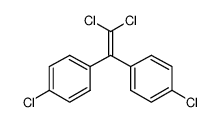






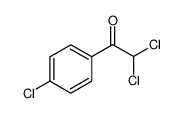
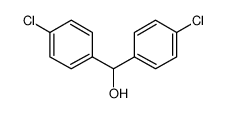
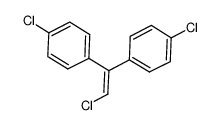










-
-

-
-
-

-
-
-

-
-
-

-
-
-

-
-
-

-
-
-

-
-
-

-
-
-

-
-
-

-
More Suppliers>>Hangzhou J&H Chemical Co., Ltd.
CHINA
Purity: 98%
Lead Time: 3 Day(s)
Price: -
Hangzhou J&H Chemical Co., Ltd.
CHINA
Purity: ≥98%
Lead Time: 7 Day(s)
Price: -
Henan Coreychem Co.,Ltd
CHINA
Purity: 98%
Lead Time: 3 Day(s)
Price: Min $1 /g
Shanghai Jizhi Biochemical Technology Co., Ltd.
CHINA
Purity: 100μg/ml(溶剂:MeOH)%
Lead Time: 1 Week(s)
Price: -
Skyrun Industrial Co., Limited
CHINA
Purity: 99%
Lead Time: 7 Day(s)
Price: -
Shanghai Xinyu Biological Technology Co., Ltd.
CHINA
Purity: 98%
Lead Time: 2 Day(s)
Price: Min $448 /mg
Shanghai Civic Chemical Technology Co., Ltd.
CHINA
Purity: :99.2%
Lead Time: 7 Day(s)
Price: Min $26.5 /ml
Shanghai Yusi Chemical Co., Ltd.
CHINA
Purity: 100%
Lead Time: 10 Day(s)
Price: Min $26.5 /ml
Shanghai Yusi Chemical Co., Ltd.
CHINA
Purity: 50.0%
Lead Time: 10 Day(s)
Price: Min $31.5 /ml
Shanghai Yusi Chemical Co., Ltd.
CHINA
Purity: 100%
Lead Time: 10 Day(s)
Price: Min $33.17 /ml